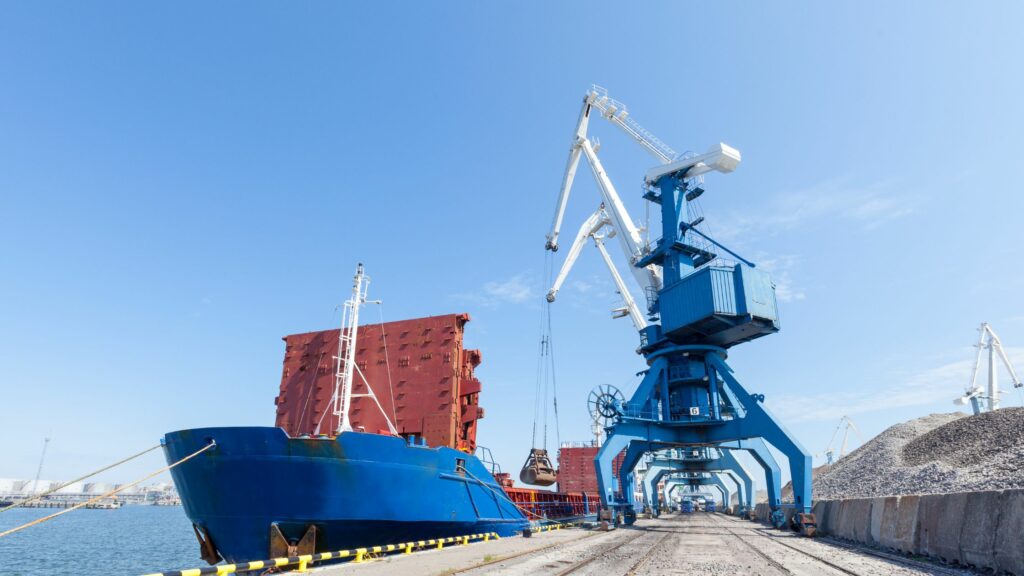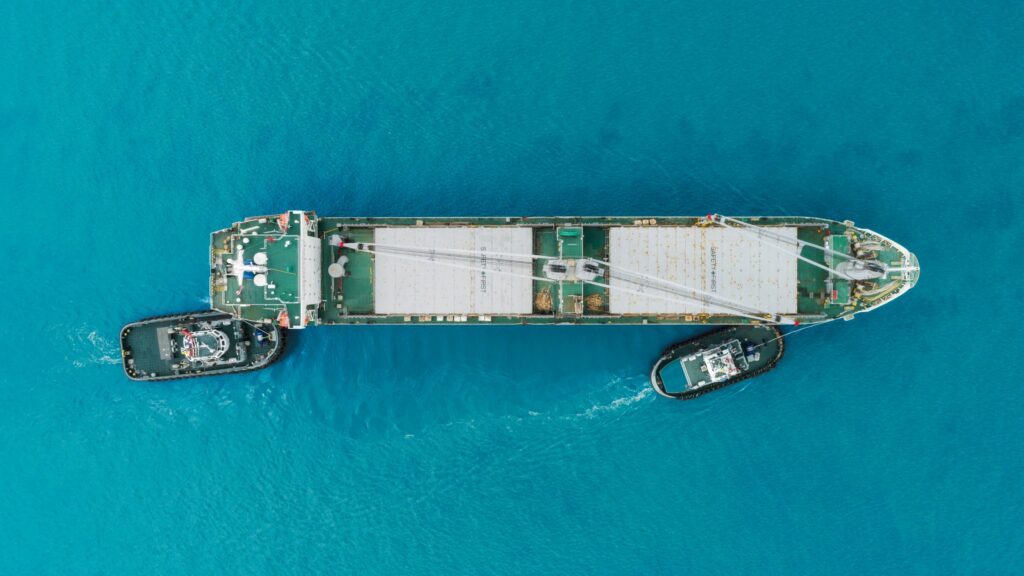Physical Address
304 North Cardinal St.
Dorchester Center, MA 02124
Spot charters, often overshadowed by the more commonly discussed time charters and bareboat charters in the shipping industry, carve out a niche with their unparalleled flexibility and immediacy. This unique approach to chartering vessels sets spot charters apart in the complex world of maritime logistics, offering a tailored experience that distinguishes them as a vital option for businesses requiring short-term shipping solutions. Key forms of spot charter agreements include voyage charters, trip time charters, and market spot charters, each known for their specific advantages.
Single voyage spot charters, in particular, stand out, providing a direct, straightforward option for transporting goods on a one-off basis. Diving deeper, each type of spot charter agreement presents its own set of benefits, pricing models, contractual nuances, and considerations for risk management. The following sections will delve into these aspects in more detail, offering a comprehensive understanding of what makes spot charters an indispensable tool for companies navigating the ever-fluctuating demands of the global shipping market.

A Spot Charter is a contract for the hire of a vessel specifically arranged for a single, specific voyage, transporting cargo from one location to another without the long-term commitments seen in time or voyage charters. This arrangement is particularly valued for its flexibility, enabling companies to capitalize on favorable market rates and respond promptly to unexpected cargo demands. In essence, it operates on a per-trip basis, where the ship is chartered for a particular journey.
The costs associated with a spot charter are influenced by current supply and demand dynamics, the specifics of the route, the type of cargo being transported, and seasonal factors. Spot charters are distinguished in the shipping industry by their ability to quickly adapt to the market’s changing needs, offering a critical solution for businesses in search of immediate, short-term shipping options.
Spot charters are particularly prevalent in certain industries and scenarios where flexibility and immediate response to market conditions are crucial. Here are some examples:
Companies leverage Spot Charters for a variety of strategic reasons, making them a cornerstone of flexible shipping strategies. Primarily, these charters are sought for single, specific voyages, enabling businesses to transport goods directly from one point to another without the constraints of long-term charter agreements. This flexibility is crucial for meeting unexpected cargo demands, allowing companies to swiftly adapt to market changes or capitalize on sudden opportunities.
Furthermore, Spot Charters present an opportunity to capitalize on favorable market rates, offering a cost-effective shipping solution when market conditions are advantageous. The combination of flexibility, immediacy, and economic efficiency makes Spot Charters an indispensable tool for businesses aiming to navigate the complex and unpredictable waters of global shipping with agility and strategic foresight.
Case Study: Transporting Wind Turbine Blades
A renewable energy company needed to transport oversized wind turbine blades from their manufacturing facility in Europe to a new wind farm being constructed in the United States. Due to the unique size of the blades and the need for a timely delivery to meet project deadlines, the company opted for a spot charter. This allowed them to secure a vessel that could accommodate the unusual cargo dimensions and ensure direct delivery to the nearest port to the project site, significantly reducing transportation time and avoiding the need for additional handling.
The spot charter not only provided the necessary logistical flexibility but also proved to be cost-effective, as it eliminated the need for long-term commitments and additional storage costs.
Statistical Data: Surge in Medical Supplies During Health Crises
During the global health crisis in 2020, there was an unprecedented surge in demand for medical supplies, including personal protective equipment (PPE), ventilators, and vaccines. To meet this sudden demand, healthcare providers and governments worldwide turned to spot charters as a rapid response solution. Spot charters enabled the immediate transportation of critical medical supplies to affected regions, demonstrating their vital role in managing supply chain disruptions during emergencies.
The flexibility of spot charters allowed for quick adaptation to changing needs, highlighting their importance in crisis response logistics.
Historical Rate Fluctuations: Benefiting from Low-Rate Periods
In early 2019, the shipping industry experienced a significant dip in freight rates due to a temporary oversupply of vessel capacity and fluctuating oil prices. Savvy companies monitored these market conditions closely and utilized spot charters to lock in lower freight rates for transporting commodities such as crude oil, iron ore, and consumer goods. By capitalizing on these favorable market rates through spot charters, companies were able to achieve substantial cost savings on transportation.
This strategic use of spot charters during low-rate periods exemplifies how businesses can leverage market volatility to their advantage, optimizing their logistics operations and reducing overall costs.
The pricing of Spot Charters is fundamentally influenced by the dynamics of supply and demand, making it a direct reflection of the current market conditions. Factors such as the specific route, the type of cargo being transported, and seasonal variations play a crucial role in determining the cost. This pricing model ensures that the rates for Spot Charters are aligned with the prevailing market conditions, offering a level of transparency and flexibility that benefits both the charterer and the vessel owner.
Companies engaging in Spot Charter agreements, therefore, must remain vigilant about global shipping market trends and rate fluctuations to secure deals that are both advantageous and cost-effective.
The pricing framework for Spot Charters hinges on the supply and demand dynamics, accurately mirroring the market’s current state. This approach ensures that the cost is a genuine reflection of the prevailing demand for vessel space against the available shipping capacity.
Furthermore, the pricing intricately considers the specific route, the type of cargo, and seasonal variations. These factors collectively contribute to a comprehensive pricing structure that accounts for the unique aspects of each voyage, enabling more precise financial planning and strategic shipping decisions.
| Route Example | Cargo Type | Seasonal Factor | Impact on Pricing |
|---|---|---|---|
| Gulf to Europe | Crude Oil | Winter | Higher due to increased demand for heating oil |
| Asia to North America | Electronics | Pre-Holiday Season (Q4) | Higher due to surge in consumer electronics demand |
| South America to Europe | Coffee Beans | Harvest Season | Higher due to bulk movement post-harvest |
| Australia to Asia | Coal | Monsoon Season | Lower due to reduced shipping capacity and delays |
| North America to Asia | LNG | Summer | Higher due to increased air conditioning use in Asia |
The key differences between Spot Charters and Time Charters lie in their duration, flexibility, and payment structure. Spot Charters are tailored for single voyages, providing unparalleled flexibility to meet the immediate needs of the cargo owner. This includes flexibility in both routes and timing, with pricing based on the prevailing market rates, reflecting the current supply and demand dynamics.
In contrast, Time Charters involve leasing a vessel for a prolonged period, granting the charterer greater operational control but also the responsibility for daily operational costs. Payments under Time Charters are typically at a fixed daily rate, offering predictability in costs but less flexibility to adapt to market changes. These distinctions make Spot Charters the go-to option for businesses in need of short-term, adaptable shipping solutions, whereas Time Charters are better suited for entities with longer-term, consistent shipping needs.

Spot Charters cater to single trips, designed to transport cargo on a specific voyage from origin to destination. This is in stark contrast to Time Charters, where the vessel is leased for an extended period, accommodating multiple voyages under a single, longer-term agreement.
In the realm of Spot Charters, the charterer enjoys the flexibility to select the most efficient or economical route for the voyage at hand. Conversely, Time Charters provide the charterer with route discretion throughout the duration of the lease, enabling strategic adjustments to shipping operations over time.
The payment model for Spot Charters aligns with the market rate, dynamically reflecting current supply and demand. On the other hand, Time Charters are predicated on a fixed daily rate, ensuring financial stability but potentially limiting the ability to capitalize on market rate fluctuations.
| Feature | Spot Charter | Time Charter |
|---|---|---|
| Duration | Single trip, typically ranging from a few days to a few weeks. | Extended period, often several months to years. |
| Flexibility | High flexibility in choosing routes and timing based on immediate needs. | Route discretion over the lease period, but with long-term commitment. |
| Payment Structure | Based on market rates, reflecting current supply and demand dynamics. | Fixed daily rate, offering cost predictability but less market adaptability. |
| Operational Control | Limited to the specific voyage; the charterer does not manage the vessel’s daily operations. | Charterer has greater control over the vessel’s operations but assumes responsibility for operational costs. |
| Ideal Use | Short-term, immediate, or one-off shipping needs. | Long-term, consistent shipping requirements with predictable schedules. |
| Market Adaptability | High, allowing charterers to capitalize on favorable market conditions. | Low, as the charter rate is fixed regardless of market fluctuations. |
When delving into Spot Charters, it’s essential to weigh several critical factors to ensure a seamless and effective chartering process. Key among these is understanding the current market conditions and rate volatility, which significantly influence charter costs and availability. Vigilant monitoring of these market dynamics is crucial for securing advantageous rates.
Equally important is scrutinizing the detailed terms in the charter party agreement. This diligence ensures that all parties have a clear understanding of their responsibilities, liabilities, and the expectations set forth, mitigating potential disputes. Lastly, being cognizant of potential risks—such as delays, unforeseen market shifts, and demurrage charges—is vital for managing the cost-efficiency and timeliness of the shipment.
A thorough assessment of these considerations enables businesses to make strategic decisions that best suit their logistical requirements and financial plans.
Understanding the current market conditions and rate volatility is critical for those considering Spot Charters. These elements significantly impact charter costs and availability, necessitating active monitoring and adaptable strategies to secure favorable terms.
In 2018, a global trading company specializing in agricultural products utilized spot charters to transport grain from the Midwest of the United States to ports in Asia. Amid escalating trade tensions and fluctuating market conditions, the company successfully navigated rate volatility by closely monitoring global shipping rates and geopolitical developments. By strategically timing their spot charter agreements, they capitalized on temporary dips in shipping rates, achieving significant cost savings while ensuring timely delivery of their cargo.
A meticulous review of the detailed terms in the charter party agreement is essential. This examination ensures clarity on all contractual obligations, rights, and expectations, laying a solid groundwork for a successful charter by addressing payment terms, liabilities, and how disputes are resolved.
| Clause | Common Points of Contention | Example |
|---|---|---|
| Demurrage | Rates and conditions under which demurrage is payable. | Negotiating a grace period before demurrage charges apply. |
| Force Majeure | Definitions and applicability of force majeure events. | Clarifying which events (e.g., natural disasters, political unrest) qualify as force majeure. |
| Laytime | Specific laytime allowances for loading and unloading. | Extending laytime allowances to accommodate potential delays at specific ports. |
Being cognizant of potential risks, such as delays, market changes, and demurrage, is vital for effective Spot Charter management. Proactively identifying and planning for these risks can significantly enhance risk management strategies, helping to minimize their impact on the cost and efficiency of shipments.
A study conducted in 2020 by a maritime analytics firm revealed that approximately 30% of spot charter voyages experienced delays due to port congestion, leading to increased demurrage charges. Furthermore, the study highlighted that sudden market changes, such as those induced by geopolitical tensions or global economic shifts, can lead to a 20% fluctuation in spot charter rates within a single quarter. Companies that actively monitored these trends and adapted their logistics strategies accordingly were able to mitigate the financial impact of these risks more effectively than those that did not.

When it comes to evaluating a Spot Charter proposal, conducting a thorough and comprehensive assessment is key to ensuring that the charter aligns with both cargo-specific needs and overarching business goals. This evaluation process should start with verifying the vessel’s suitability and condition to confirm its capability for safe and efficient cargo transportation. Next, assessing the reliability of the charterer is crucial; this involves looking into their industry reputation, financial health, and track record for reliability.
Lastly, a deep dive into the cargo’s specific requirements is essential, as this will significantly influence the selection of the vessel, the planning of the route, and the negotiation of the charter party agreement terms. By meticulously considering these factors, businesses can make well-informed decisions that not only optimize their logistical operations but also safeguard against potential risks and challenges.
A crucial first step in evaluating a Spot Charter proposal involves verifying the vessel’s suitability and condition. This critical assessment ensures the chosen vessel adheres to the highest safety and performance standards, tailored specifically for the cargo and journey at hand, thus mitigating risk during transportation.
Another key component of the evaluation is assessing the reliability of the charterer. This entails a comprehensive review of the charterer’s financial health, operational history, and industry reputation to confirm their capability and reliability in upholding the terms of the charter agreement.
Finally, a deep dive into understanding the cargo’s specific requirements is indispensable. This step focuses on the unique needs of the cargo, including handling, storage, and any special conditions necessary for its safe and efficient transport. Ensuring the vessel is equipped to meet these requirements is essential for the success of the Spot Charter.
A Spot Charter Contract is designed for a single, specific voyage, providing flexibility and immediacy to meet short-term shipping needs and capitalize on current market rates. In contrast, a Consecutive Voyage Charter involves a series of back-to-back voyages under one contract, offering stability and predictability for ongoing shipping requirements. While spot charters are ideal for sudden, one-off cargo demands, consecutive voyage charters are better suited for continuous, long-term shipping operations.